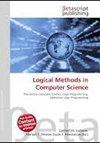了解QBF CDCL求解器的相对强度和QBF分辨率
IF 1
4区 数学
Q4 COMPUTER SCIENCE, THEORY & METHODS
引用次数: 0
摘要
实现QCDCL范式的QBF求解器是强大的算法,可以成功地处理许多计算复杂的应用程序。然而,我们对这些QCDCL求解器的强度和局限性的理论理解非常有限。在本文中,我们建议将QCDCL解算器形式化建模为证明系统。我们定义了可用于决策启发式和单元传播的不同策略,并产生了许多健全和完整的QBF证明系统(以及新的QCDCL算法)。对于实际QCDCL求解中使用的标准策略,我们证明了相应的QCDCL证明系统与文献中使用的经典QBF解析系统Q-resolution(通过指数分离)是不可比拟的。这与已知CDCL和分辨率是p等价的命题设置形成鲜明对比。这就提出了一个问题:对于标准QCDCL,哪些公式是困难的,因为q分辨率下界并不一定适用于QCDCL,正如我们在这里展示的那样。为了回答这个问题,我们证明了QCDCL的几个下界,包括一大类随机QBFs的指数下界。我们还介绍了对经典QCDCL中使用的决策启发式的强化,它不一定按照前缀的顺序决定变量,但仍然允许学习断言子句。我们证明了使用该决策策略,QCDCL在某些公式上可以以指数速度加快。我们进一步展示了一个p等价于q分辨率的QCDCL证明系统。与经典的QCDCL相比,这个新的QCDCL版本同时适应了决策和单元传播策略。本文章由计算机程序翻译,如有差异,请以英文原文为准。
Understanding the Relative Strength of QBF CDCL Solvers and QBF Resolution
QBF solvers implementing the QCDCL paradigm are powerful algorithms that successfully tackle many computationally complex applications. However, our theoretical understanding of the strength and limitations of these QCDCL solvers is very limited. In this paper we suggest to formally model QCDCL solvers as proof systems. We define different policies that can be used for decision heuristics and unit propagation and give rise to a number of sound and complete QBF proof systems (and hence new QCDCL algorithms). With respect to the standard policies used in practical QCDCL solving, we show that the corresponding QCDCL proof system is incomparable (via exponential separations) to Q-resolution, the classical QBF resolution system used in the literature. This is in stark contrast to the propositional setting where CDCL and resolution are known to be p-equivalent. This raises the question what formulas are hard for standard QCDCL, since Q-resolution lower bounds do not necessarily apply to QCDCL as we show here. In answer to this question we prove several lower bounds for QCDCL, including exponential lower bounds for a large class of random QBFs. We also introduce a strengthening of the decision heuristic used in classical QCDCL, which does not necessarily decide variables in order of the prefix, but still allows to learn asserting clauses. We show that with this decision policy, QCDCL can be exponentially faster on some formulas. We further exhibit a QCDCL proof system that is p-equivalent to Q-resolution. In comparison to classical QCDCL, this new QCDCL version adapts both decision and unit propagation policies.
求助全文
通过发布文献求助,成功后即可免费获取论文全文。
去求助
来源期刊

Logical Methods in Computer Science
工程技术-计算机:理论方法
CiteScore
1.80
自引率
0.00%
发文量
105
审稿时长
6-12 weeks
期刊介绍:
Logical Methods in Computer Science is a fully refereed, open access, free, electronic journal. It welcomes papers on theoretical and practical areas in computer science involving logical methods, taken in a broad sense; some particular areas within its scope are listed below. Papers are refereed in the traditional way, with two or more referees per paper. Copyright is retained by the author.
Topics of Logical Methods in Computer Science:
Algebraic methods
Automata and logic
Automated deduction
Categorical models and logic
Coalgebraic methods
Computability and Logic
Computer-aided verification
Concurrency theory
Constraint programming
Cyber-physical systems
Database theory
Defeasible reasoning
Domain theory
Emerging topics: Computational systems in biology
Emerging topics: Quantum computation and logic
Finite model theory
Formalized mathematics
Functional programming and lambda calculus
Inductive logic and learning
Interactive proof checking
Logic and algorithms
Logic and complexity
Logic and games
Logic and probability
Logic for knowledge representation
Logic programming
Logics of programs
Modal and temporal logics
Program analysis and type checking
Program development and specification
Proof complexity
Real time and hybrid systems
Reasoning about actions and planning
Satisfiability
Security
Semantics of programming languages
Term rewriting and equational logic
Type theory and constructive mathematics.
 求助内容:
求助内容: 应助结果提醒方式:
应助结果提醒方式:


